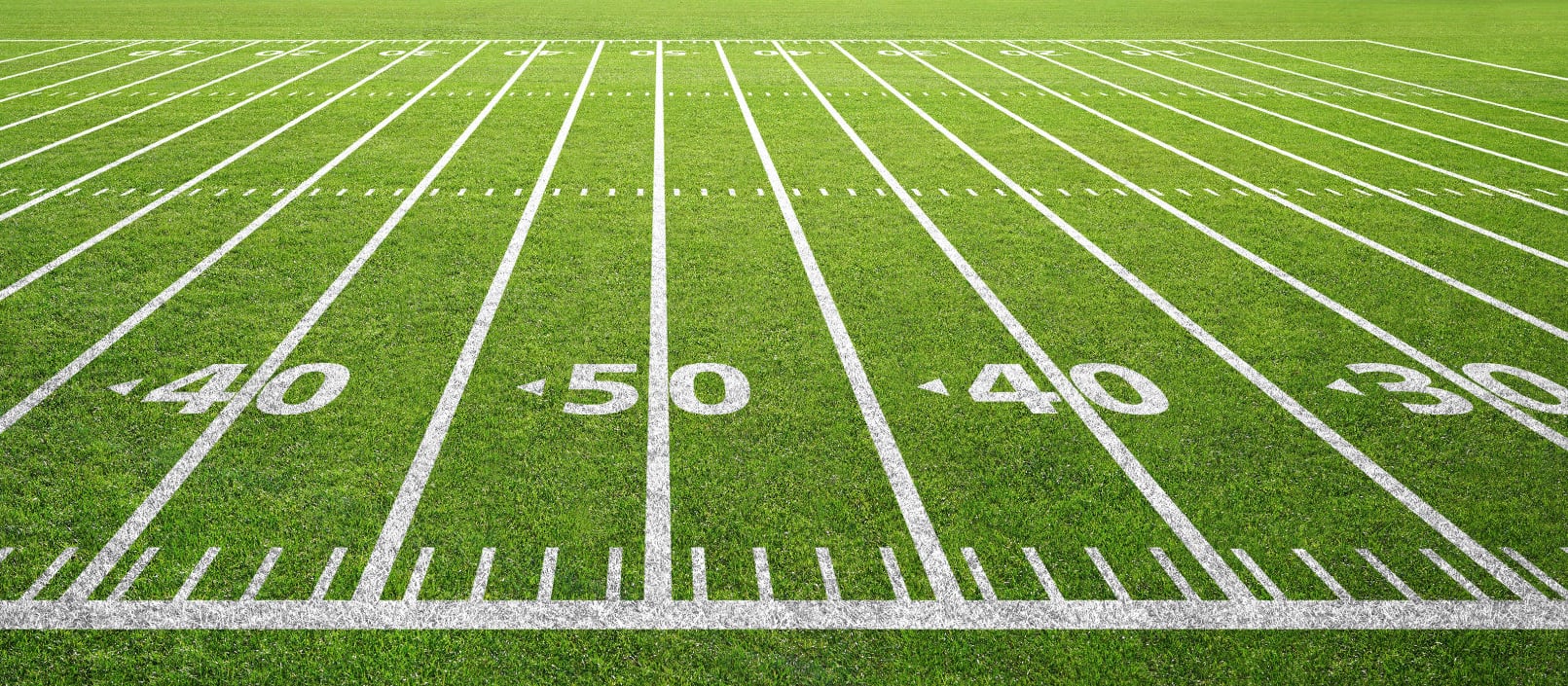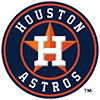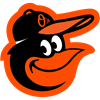In point-per-reception (PPR) leagues, the premise is simple: players receive an additional 0.5-1 point per each reception. However, that seemingly minor rule has a profound impact on the complexion of a league and the approach to building a winning team.
Obviously, certain players, and certain types of players, are more valuable in PPR than in standard. These are skill position guys who catch a lot of passes, even if not necessarily for huge yardage. Additionally, the RB, WR and TE positions in general have more value in PPR, because they have an added means of accumulating points, while quarterbacks, notably, aren't rewarded points for each completion.
To assemble a winning PPR team, the main goal then is to draft a strong stable of skill position players who catch a lot of passes, while making quarterbacks a slightly lesser concern as they score a smaller percentage of your overall points.
Let's examine the PPR effect, position by position:
Wide Receiver
| Player | G | Targets | Rec | Yard | TD | FF Pts | FF Pts/G |
| Calvin Johnson (DET) | 16 | 204 | 122 | 1,964 | 5 | 348.4 | 21.8 |
| Brandon Marshall (CHI) | 16 | 192 | 118 | 1,508 | 11 | 334.6 | 20.9 |
| A.J. Green (CIN) | 16 | 164 | 97 | 1,350 | 11 | 301.8 | 18.9 |
| Dez Bryant (DAL) | 16 | 138 | 92 | 1,382 | 12 | 301.7 | 18.9 |
| Demaryius Thomas (DEN) | 16 | 141 | 94 | 1,442 | 10 | 298.2 | 18.6 |
| Andre Johnson (HOU) | 16 | 162 | 112 | 1,598 | 4 | 295.8 | 18.5 |
| Wes Welker (NE) | 16 | 175 | 118 | 1,354 | 6 | 291.4 | 18.2 |
| Reggie Wayne (IND) | 16 | 195 | 106 | 1,355 | 5 |
In point-per-reception (PPR) leagues, the premise is simple: players receive an additional 0.5-1 point per each reception. However, that seemingly minor rule has a profound impact on the complexion of a league and the approach to building a winning team.
Obviously, certain players, and certain types of players, are more valuable in PPR than in standard. These are skill position guys who catch a lot of passes, even if not necessarily for huge yardage. Additionally, the RB, WR and TE positions in general have more value in PPR, because they have an added means of accumulating points, while quarterbacks, notably, aren't rewarded points for each completion.
To assemble a winning PPR team, the main goal then is to draft a strong stable of skill position players who catch a lot of passes, while making quarterbacks a slightly lesser concern as they score a smaller percentage of your overall points.
Let's examine the PPR effect, position by position:
Wide Receiver
| Player | G | Targets | Rec | Yard | TD | FF Pts | FF Pts/G |
| Calvin Johnson (DET) | 16 | 204 | 122 | 1,964 | 5 | 348.4 | 21.8 |
| Brandon Marshall (CHI) | 16 | 192 | 118 | 1,508 | 11 | 334.6 | 20.9 |
| A.J. Green (CIN) | 16 | 164 | 97 | 1,350 | 11 | 301.8 | 18.9 |
| Dez Bryant (DAL) | 16 | 138 | 92 | 1,382 | 12 | 301.7 | 18.9 |
| Demaryius Thomas (DEN) | 16 | 141 | 94 | 1,442 | 10 | 298.2 | 18.6 |
| Andre Johnson (HOU) | 16 | 162 | 112 | 1,598 | 4 | 295.8 | 18.5 |
| Wes Welker (NE) | 16 | 175 | 118 | 1,354 | 6 | 291.4 | 18.2 |
| Reggie Wayne (IND) | 16 | 195 | 106 | 1,355 | 5 | 271.0 | 16.9 |
| Eric Decker (DEN | 16 | 122 | 85 | 1,064 | 13 | 269.4 | 16.8 |
| Roddy White (ATL) | 16 | 143 | 92 | 1,351 | 7 | 269.1 | 16.8 |
Last year, these were the highest scoring WRs in PPR leagues. Unsurprisingly, 10 of the league's top 11 in receptions are on this list, with the omission being Victor Cruz, who had 86 receptions and ranked 14th. Additionally, there were eight 1,000-plus yard receivers who finished outside the top-10, including Vincent Jackson, who had nearly 1,400 yards (and eight TDs). There were nearly as many receivers with 10-plus TDs (four) outside the top 10 as there were in it (five). And, both Johnsons, Welker, Wayne, and White all had mediocre TD numbers.
Decker is a bit of an outlier on this list, despite being tied for 11th in the league in receptions (85 is still a lot), and by far last on this top 10 in terms of yardage, because of his inordinate number of TDs. In other words, PPR values can be a little tricky to figure out.
There are also certain WRs that benefit greatly from the PPR format, and these are players who are relied on for possession catches and moving the chains, rather than the big play. Welker has been a PPR all-star for this, because of his insane amount of receptions over the last six years (112 receptions per year) and his lack of deep plays. But his yardage has also consistently been tremendous, due to his high volume of targets – something that might not persist in Denver this year.
Here are some wideouts who should thrive in 2013 PPR leagues:
Percy Harvin (SEA): Harvin has been a good PPR player in his career, as the Vikings featured him a ton in the short passing game, knowing his YAC ability and without Adrian Peterson being a significant receiving threat. Now, Harvin's in the perfect position in Seattle, with a strong quarterback, and a deep-threat receiver across from him in Sidney Rice (again).
Danny Amendola (NE): Amendola's season ended early last year, and he played just one game in 2011, but he has proven to be a PPR asset when he suits up. He registered 85 catches in his one full season in 2010, and 63 catches in just 11 games in 2012. Now, he has Tom Brady at QB, and the Patriots chose him over Welker. There's no reason to think he won't be a 100-catch threat in 2013 if he stays healthy.
Tavon Austin (STL): The most likely rookie to have major PPR impact, Austin was selected eighth overall by the Rams to replace Amendola. St. Louis sees him as a Harvin/Darren Sproles-hybrid, as a 5-9 speedster who can be used all over the field. Austin isn't a deep threat, but will turn a lot of short balls into big gains and should be a nice safety valve for Sam Bradford.
Tight End
At tight end, there's even less of a disparity between standard and PPR leagues, because many TEs are possession players by nature.
2012 Top 10 PPR Scorers:
| Player | G | Target | Rec | Yard | TD | FF Pts | FF Pts/G |
| Jimmy Graham (NO) | 15 | 135 | 85 | 982 | 9 | 237.2 | 15.8 |
| Tony Gonzalez (ATL) | 16 | 124 | 93 | 930 | 8 | 234.0 | 14.6 |
| Jason Witten (DAL) | 16 | 147 | 110 | 1,039 | 3 | 231.9 | 14.5 |
| Heath Miller (PIT) | 15 | 101 | 71 | 816 | 8 | 200.6 | 13.4 |
| Rob Gronkowski (NE) | 11 | 79 | 55 | 790 | 11 | 200.0 | 18.2 |
| Brandon Myers (OAK) | 16 | 105 | 79 | 806 | 4 | 183.6 | 11.5 |
| Greg Olsen (CAR) | 16 | 104 | 69 | 843 | 5 | 183.3 | 11.5 |
| Dennis Pitta (BAL) | 16 | 94 | 61 | 669 | 7 | 169.9 | 10.6 |
| Owen Daniels (HOU) | 15 | 104 | 62 | 716 | 6 | 169.6 | 11.3 |
| Jermaine Gresham (CIN) | 16 | 94 | 64 | 737 | 5 | 167.7 | 10.5 |
Unsurprisingly, these also happen to be the top-10 scorers in standard leagues, with Jimmy Graham ranking 1st in both formats, and the same top five in both (with only the order slightly different). Much like receiver, the tight end position is only slightly altered by the PPR format.
Having said that, here are a couple guys that could move up the list into the elite in 2013:
Dennis Pitta (BAL): Pitta broke out in 2012 with 93 targets and seven TDs for the Super Bowl champs. Now with Anquan Boldin – who was largely used as a possession receiver over the middle – out of the picture, Pitta should become a more focal part of the offense and could threaten to lead TEs in catches.
Brandon Myers (NYG): Myers was quietly great for Oakland last season, accruing 79 catches on 105 targets (75% catch rate). And that was with Carson Palmer at quarterback. Eli Manning has always used tight ends well, when he's had them, and Myers should be a great complement to New York's outside threats.
Running Back
Believe it or not, running back values are affected most by PPR leagues, because of their varying roles in the offense. In other words, a QB's job is to throw (or run), so the position as a whole is less valuable in PPR. A receiver's value can vary from standard to PPR, but all WRs catch passes for a living, so the difference typically isn't drastic. RBs, however, are a hybrid of both running and receiving, and how much a runner does of each depends on his role within the offense. This could be determined based on the back's skill set, the offensive scheme or the abilities of the QB. Consequently, there's a wide variance in how much a particular back benefits from the switch to a PPR format.
2012 Top 10 PPR Scorers:
| Player | G | Att | Yard | TD | Rec | Yard | TD | Total Pts | PPG |
| Peterson (MIN) | 16 | 348 | 2,097 | 12 | 40 | 217 | 1 | 349.4 | 21.8 |
| Martin (TB) | 16 | 319 | 1,454 | 11 | 49 | 472 | 1 | 313.6 | 19.6 |
| Foster (HOU) | 16 | 351 | 1,411 | 15 | 40 | 217 | 2 | 304.8 | 19.1 |
| Rice (BAL) | 16 | 257 | 1,143 | 9 | 61 | 478 | 1 | 283.1 | 17.7 |
| Lynch (SEA) | 16 | 315 | 1,590 | 11 | 23 | 196 | 1 | 273.6 | 17.1 |
| Spiller (BUF) | 16 | 207 | 1,244 | 6 | 43 | 459 | 2 | 261.3 | 16.3 |
| Morris (WAS) | 16 | 335 | 1,606 | 13 | 11 | 77 | 0 | 257.3 | 16.1 |
| Richardson (CLE) | 15 | 267 | 950 | 11 | 51 | 367 | 1 | 254.7 | 17.0 |
| Charles (KC) | 16 | 284 | 1,513 | 5 | 36 | 236 | 1 | 246.9 | 15.4 |
| Gore (SF) | 16 | 259 | 1,212 | 8 | 28 | 234 | 1 | 226.6 | 14.2 |
As at TE and WR, the top guys in PPR are similar to the top guys in standard leagues, but there are some indications for how a back's value can vary based on the format. Rice, first on this list in catches, averaged 3.7 more points per game in PPR than standard leagues, despite having the second least amount of carries on the list. Richardson is the only runner on the list that missed a game, yet still cracked the top eight due to his receiving numbers. Meanwhile, Morris, Lynch, and Charles were able to overcome their low receiving totals by putting up huge rushing yardage and therefore remained elite in PPR.
The most visible difference PPR can make for backs comes in later tiers. For instance, check out some of these RBs numbers in PPR vs. standard leagues:
| Player | G | Att | Yard | TD | Rec | Yard | TD | Standard Rnk | PPR Rnk |
| Stevan Ridley (NE) | 16 | 290 | 1,263 | 12 | 6 | 51 | 0 | 10 | 15 |
| Darren Sproles (NO) | 13 | 48 | 244 | 1 | 75 | 667 | 7 | 22 | 13 |
| Joique Bell (DET) | 16 | 82 | 414 | 3 | 52 | 485 | 0 | 29 | 23 |
| Jacquizz Rodgers (ATL) | 16 | 94 | 362 | 1 | 53 | 402 | 1 | 37 | 29 |
| Marcel Reece (OAK) | 15 | 59 | 271 | 0 | 52 | 496 | 1 | 41 | 31 |
Throughout the draft there are always some backs who prove much more (or less) valuable in PPR leagues. While Reece and Bell probably won't see the same workloads as last year's due to personnel changes on their teams, there will be new backs whose values see a significant bump in PPR formats, and others who maintain their passing-game production. Here are a few worth noting:
Darren Sproles (NO): The posterboy for PPR leagues, Sproles ranked 13th among backs in PPR scoring last season but 22nd in standard leagues. He doesn't get many carries, but still ranked first among RBs in receptions and receiving yards in only 13 games.
Reggie Bush (DET): Bush had a nice season running the ball for Miami last year, but now he's back in a pass-oriented offense that better fits his skill set. Bush could reprise his New Orleans' days where he once caught 88 balls.
Jamaal Charles (KC): Charles has always been a good pass-catcher, but in Andy Reid's West Coast offense, his PPR value could take off. Under Reid Brian Westbrook had three seasons of 70-plus catches, and LeSean McCoy had one.
Shane Vereen (NE): With Danny Woodhead and his 40 catches now in San Diego Vereen is likely to be the team's third-down back. Starter Stevan Ridley is rarely used on the passing game, and Vereen had seven catches in two playoff games last January.
























